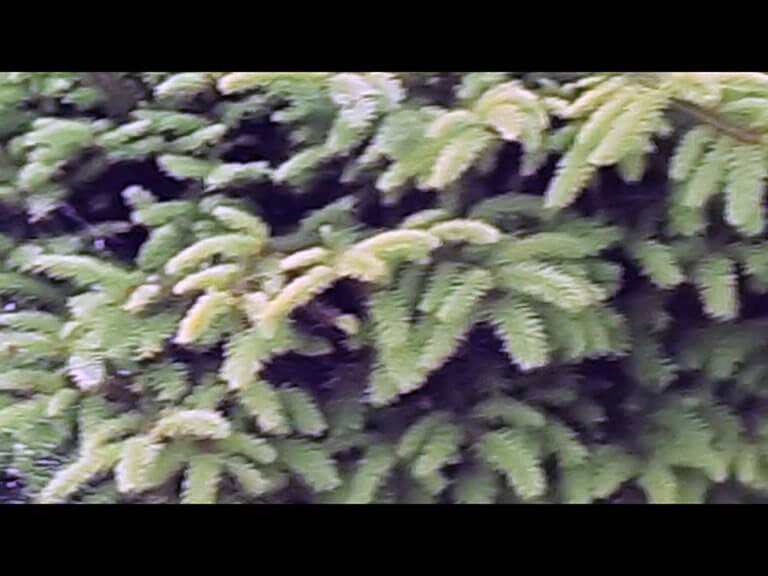Birds Nest Spruce Problems: Quick Solutions Guide
Birds Nest Spruce can face several problems, including browning needles, poor growth, and pest infestations. Identifying these issues early can help ensure your plant remains healthy.
The Birds Nest Spruce, known for its unique shape and dense foliage, is a popular choice for gardens and landscapes. Despite its appealing appearance, this plant can encounter various challenges that affect its health and growth. Common issues include needle discoloration, stunted growth, and susceptibility to pests like spider mites and aphids.
Environmental factors, such as improper watering or insufficient sunlight, can also contribute to these problems. Understanding the signs of distress in Birds Nest Spruce allows gardeners to take timely action. Proper care and attention can help maintain the plant’s vibrant appearance and longevity in your garden.
Introduction To Birds Nest Spruce

The Birds Nest Spruce is a unique and charming tree. Its low-growing, rounded shape makes it a great choice for gardens. This tree is popular for its dense foliage and attractive appearance. Understanding its characteristics helps in maintaining its health.
Characteristics Of The Spruce
The Birds Nest Spruce has several distinct features:
- Height: Typically grows 3 to 6 feet tall.
- Width: Can spread up to 4 to 5 feet wide.
- Color: Displays rich green needles year-round.
- Shape: Forms a compact, nest-like appearance.
This spruce is also known for its resilience. It thrives in various soil types. It prefers well-drained soil with good moisture.
Popularity In Landscaping
The Birds Nest Spruce is favored in landscaping for many reasons:
- It requires low maintenance.
- It provides year-round greenery.
- It fits well in small spaces.
- It attracts birds and wildlife.
Landscape designers often use it in:
- Rock gardens
- Foundation plantings
- Mixed borders
This spruce adds charm and beauty to any garden setting.
Common Issues With Birds Nest Spruce
Birds Nest Spruce trees are lovely but face some problems. These issues can affect their health and beauty. Recognizing and addressing these problems early is vital.
Pest Infestations
Pests can harm Birds Nest Spruce trees. Here are some common pests:
- Spider Mites: They suck sap from leaves.
- Spruce Budworms: They chew on new growth.
- Scale Insects: They attach to branches and leaves.
Signs of pest infestations include:
- Yellowing or browning needles.
- Webbing on branches.
- Stunted growth.
Control methods:
- Use insecticidal soap.
- Apply neem oil.
- Encourage natural predators.
Disease Outbreaks
Diseases can also affect Birds Nest Spruce. The most common ones include:
| Disease | Symptoms | Treatment |
|---|---|---|
| Root Rot | Wilting leaves, brown roots | Improve drainage, remove infected roots |
| Needle Blight | Brown tips on needles | Prune affected areas, apply fungicide |
| Rust | Orange spots on needles | Remove infected leaves, fungicide treatment |
Regular checks can help catch diseases early. Maintain good air circulation around the tree. Healthy trees are less likely to get sick.
Environmental Stress Factors
Birds Nest Spruce trees face various environmental stress factors. These factors can affect their health and growth. Understanding these issues helps in proper care and maintenance.
Adverse Weather Conditions
Weather plays a big role in the health of Birds Nest Spruce. Extreme conditions can harm the tree. Here are some common adverse weather conditions:
- Heavy Snow: Can break branches and damage the tree.
- Strong Winds: May uproot young trees or cause breakage.
- Frost: Late frosts can damage new growth.
- Heat Waves: Prolonged heat can dry out the soil.
Monitoring weather patterns helps in protecting these trees. Proper shelter can minimize damage.
Soil Quality Concerns
The quality of soil directly affects Birds Nest Spruce growth. Poor soil conditions can lead to health issues. Key soil concerns include:
| Soil Factor | Impact on Trees |
|---|---|
| pH Levels | Too high or low pH affects nutrient uptake. |
| Nutrient Deficiency | Lack of essential nutrients leads to weak growth. |
| Drainage Issues | Poor drainage can cause root rot. |
| Compaction | Compact soil restricts root growth and air flow. |
Testing soil quality is crucial. Use fertilizers to improve nutrient levels. Ensure good drainage to support healthy roots.
Quick Identification Of Symptoms
Detecting problems in your Birds Nest Spruce early can save it. Knowing the symptoms helps you take action. Look out for signs of distress.
Visual Signs Of Distress
Start by examining the tree closely. Visual signs can reveal much about its health.
- Discoloration: Needles turning yellow or brown.
- Needle Drop: Excessive shedding of needles.
- Wilting: Needles appearing droopy or limp.
- Growth Issues: Stunted or uneven growth.
- Texture Changes: Bark cracks or peeling.
Early Warning Indicators
Look for early signs before problems worsen. These indicators can help you act quickly.
| Indicator | Description |
|---|---|
| Soft Spots | Areas on branches feel mushy or weak. |
| Pests | Visible insects or webs on the tree. |
| Fungal Growth | Mushrooms or mold near the base. |
| Unusual Odor | Foul smell indicating decay. |
Check your Birds Nest Spruce regularly. Early detection is key to recovery.
Solutions For Pest Control
Birds Nest Spruce can attract pests. Effective pest control keeps your trees healthy. Explore these two main solutions: using natural predators and chemical treatments.
Natural Predators
Encouraging natural predators is an eco-friendly way to control pests. Here are some effective predators:
- Ladybugs: They eat aphids and other small pests.
- Praying Mantises: These insects consume various pests.
- Birds: Many bird species feed on insects.
To attract these predators:
- Plant native flowers and shrubs.
- Avoid chemical pesticides that harm beneficial insects.
- Provide shelter with rocks or brush piles.
Chemical Treatments
Sometimes, chemical treatments are necessary for severe infestations. Use them sparingly. Here are common options:
| Treatment | Active Ingredient | Target Pests |
|---|---|---|
| Insecticidal Soap | Potassium Salts | Aphids, spider mites |
| Neem Oil | Azadirachtin | Scale insects, mealybugs |
| Pyrethrin | Chrysanthemum Extract | Various soft-bodied insects |
Follow these tips for safe chemical use:
- Apply treatments in the early morning or late evening.
- Read labels carefully for proper usage.
- Wear protective gear during application.
These methods help protect your Birds Nest Spruce. Implementing them can lead to a healthier tree.
Managing Diseases In Spruce Trees
Spruce trees are beautiful but vulnerable to various diseases. Managing these diseases is crucial for their health. Proper care can help you maintain a vibrant tree. Identifying the type of disease is the first step. Here are ways to manage common diseases in spruce trees.
Fungal Infection Remedies
Fungal infections can harm your spruce trees. Here are effective remedies:
- Pruning: Remove infected branches.
- Fungicides: Apply approved fungicides. Follow the label instructions carefully.
- Watering: Water at the base to keep foliage dry.
- Air Circulation: Ensure enough space between trees.
Regular monitoring helps in early detection. Look for signs like:
- Discolored needles
- Branch dieback
- Excessive needle drop
| Fungal Infection | Symptoms | Remedy |
|---|---|---|
| Needle Cast | Yellowing needles, premature needle drop | Fungicides, proper pruning |
| Root Rot | Wilting, yellowing leaves | Improve drainage, remove affected roots |
Bacterial Disease Management
Bacterial diseases can also affect spruce trees. Here are management tips:
- Sanitation: Clean tools regularly to prevent spread.
- Removing Infected Parts: Cut out infected areas immediately.
- Soil Health: Test soil for nutrient balance.
- Proper Fertilization: Use balanced fertilizers to strengthen trees.
Watch for symptoms like:
- Black streaks on branches
- Oozing sap from wounds
- Stunted growth
Act quickly to minimize damage. Healthy trees can fight off diseases better.
Cultural Practices For Healthier Trees
Caring for your Birds Nest Spruce is vital. Healthy trees resist pests and diseases. Proper cultural practices boost their growth and resilience.
Proper Watering Techniques
Water is essential for the health of Birds Nest Spruce. Follow these techniques to ensure proper hydration:
- Water deeply to encourage strong root growth.
- Use a soaker hose for even moisture distribution.
- Water early in the morning to reduce evaporation.
- Avoid wetting the foliage to prevent disease.
Consider the weather. Adjust watering based on rainfall. Here’s a quick guide:
| Condition | Watering Frequency |
|---|---|
| Dry weather | Every 5-7 days |
| Rainy weather | Once every 2 weeks |
| Newly planted | Every 3-4 days |
Optimizing Fertilization
Fertilization helps Birds Nest Spruce thrive. Use these tips for effective fertilization:
- Choose a balanced fertilizer, like 10-10-10.
- Apply fertilizer in early spring before new growth.
- Follow package instructions for application rates.
- Consider soil tests to determine nutrient needs.
Organic options also benefit trees. Look for slow-release fertilizers. These provide nutrients over time.
Remember to mulch around the base. Mulch retains moisture and adds nutrients as it breaks down.
Professional Care And Maintenance
Birds Nest Spruce trees require careful attention for healthy growth. Regular maintenance keeps these trees strong and beautiful. Knowing when and how to care for them is essential.
When To Call An Arborist
Some issues need expert help. Here are signs to call an arborist:
- Tree shows signs of disease.
- Branches are dead or dying.
- Tree leans dangerously.
- Insect infestations are visible.
- Major storms cause damage.
Professional arborists can diagnose problems quickly. They know how to treat your Birds Nest Spruce effectively.
Routine Pruning Strategies
Pruning is vital for tree health. Follow these simple strategies:
- Remove dead or damaged branches.
- Cut back overgrown branches.
- Thin out crowded areas.
- Shape the tree for better sunlight.
Use clean, sharp tools for pruning. This prevents infections. Prune in late winter or early spring. Avoid pruning during heavy growth seasons.
| Pruning Tips | Benefits |
|---|---|
| Remove dead branches | Improves air circulation |
| Shape the tree | Enhances sunlight exposure |
| Thin crowded areas | Reduces disease risk |
Regular care keeps your Birds Nest Spruce thriving. It enhances beauty and health.
Preventive Measures For Long-term Health
Maintaining the health of your Birds Nest Spruce is crucial. Preventive measures ensure these trees thrive over time. Focus on their location and seasonal care. Here are some effective strategies.
Selecting The Right Location
Choosing the perfect spot for your Birds Nest Spruce is essential. Consider these factors:
- Sunlight: They prefer partial to full sun.
- Soil: Well-drained, sandy soils work best.
- Space: Ensure enough room for growth.
- Protection: Shield them from harsh winds.
Before planting, conduct a soil test. This helps determine pH levels and nutrient content. Adjust the soil as needed to support healthy growth.
Seasonal Care Tips
Proper care throughout the year promotes long-term health. Follow these seasonal tips:
- Spring: Fertilize with a balanced fertilizer.
- Summer: Water deeply during dry spells.
- Fall: Mulch around the base to retain moisture.
- Winter: Protect from heavy snow and ice.
Regularly check for pests and diseases. Early detection prevents serious issues. Use organic pesticides if needed. Keep your Birds Nest Spruce healthy and vibrant.
Conclusion: Thriving Birds Nest Spruce
The Birds Nest Spruce is a unique and beautiful tree. To keep it healthy, observe its needs closely. This section provides important insights to ensure your spruce thrives.
Key Takeaways
- Regular Care: Water and fertilize properly.
- Sunlight: Ensure it gets enough sunlight.
- Pest Control: Monitor for pests and diseases.
- Pruning: Trim dead branches to encourage growth.
- Soil Quality: Use well-draining soil for best results.
Continual Observation And Care
Healthy Birds Nest Spruce requires ongoing attention. Watch for signs of stress or illness. Check the soil moisture regularly.
Here are some signs to monitor:
| Sign | Action |
|---|---|
| Yellowing needles | Check for overwatering or nutrient deficiency. |
| Wilting branches | Ensure proper watering and drainage. |
| Pest presence | Apply appropriate pest control methods. |
Consistent care leads to a vibrant tree. Adjust your care routine as needed to promote healthy growth.
Frequently Asked Questions
What Are Common Birds Nest Spruce Problems?
Common issues include needle drop, poor growth, and pest infestations.
How To Identify Birds Nest Spruce Diseases?
Look for discoloration, wilting, or unusual growth patterns on the tree.
Can Birds Nest Spruce Recover From Stress?
Yes, with proper care, they can bounce back from stress factors like drought or pests.
What Pests Affect Birds Nest Spruce?
Common pests include spider mites, aphids, and spruce budworms that can harm the tree.
How To Care For Birds Nest Spruce?
Provide adequate water, mulch, and regular pruning to maintain health and vigor.
Conclusion
Birds Nest Spruce can face various challenges that affect their health and appearance. Recognizing these issues early is crucial. Regular maintenance and proper care can help mitigate many problems. By staying informed and proactive, you can ensure your Birds Nest Spruce thrives in your garden, adding beauty and charm for years to come.






